Make a list of the best-known African animals, and the bontebok isn’t going to make the cut. Chances are, you’ve never even heard of this antelope.
But the bontebok deserves a place in the annals of conservation history. It is arguably the first African animal saved from human-caused extinction. Its rescue is flat-out one of the most dramatic conservation success stories anywhere.
At one point, the global bontebok population had been reduced to 17 animals. That’s right. Seventeen. Other species were disappearing around it. The bontebok was, it appeared, doomed.
Today, there is a long list of African wildlife in peril. But not the bontebok. Its population is secure and growing, and its near-miss with oblivion is largely forgotten.
How did such a dramatic turnaround occur? Like many conservation rescue stories, this is a story of destruction followed by a bit of drama and a bit of luck.
In this story, though, a quirk of bontebok behavior – some might even call it a flaw – also helped save the day.
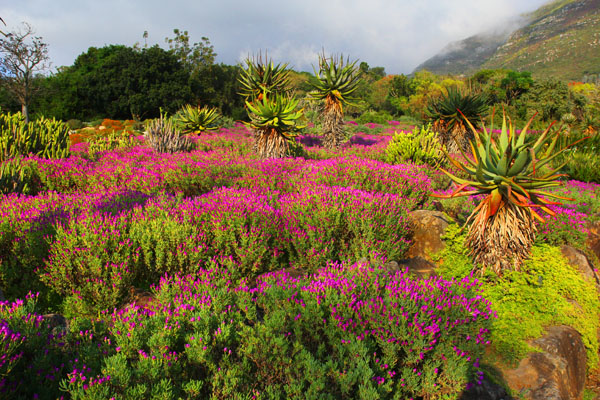
Cape Destruction
Following media accounts, one gets the impression that the poaching of African wildlife is a relatively recent phenomenon. Everyone knows that rhinos and elephants are facing a critical moment.
For wildlife of the South African Cape, that critical moment came centuries ago.
European settlers landed on the Cape of Good Hope in 1650, and the Dutch established a trading post there in 1667 – beginning a wave of colonization. This had disastrous results for indigenous people and for wildlife.
At the time of colonization, the South African Cape had large numbers of megafauna, including the animals familiar to us via nature documentaries today: lions and elephants and rhinos.
It also was home to many large mammals that are largely unfamiliar to the viewer of nature documentaries. Springbok, a gazelle species, migrated by the millions. There were quaggas, a subspecies of zebra with indistinct stripes. There were black wildebeest and mountain zebras and rhebok.
And there were bontebok.
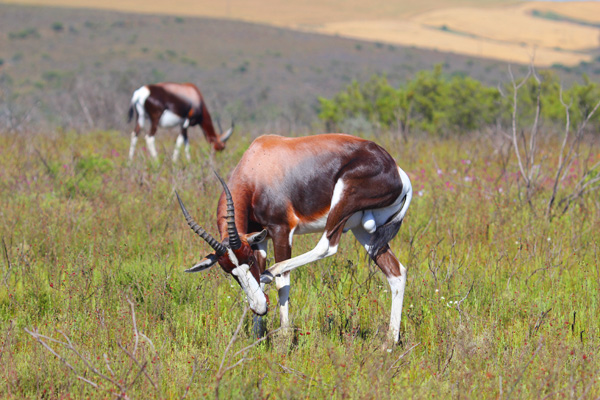
Although there remains some taxonomic debate, most mammologists consider the bontebok to be a subspecies of blesbok. Bontebok are a distinct and beautiful subspecies: they have a bright, white rump patch and purplish highlights on their sleek coat.
The bontebok occurred only in the Western Cape of southern Africa. Dutch settlers saw it – and all hoofed mammals – as competition for farmland. They shot huge numbers of ungulates without restraint or mercy.
The Cape was cleared of its large mammals, one by one. For a while, it looked like the bontebok would follow the path of another Cape endemic, the bluebuck.
The bluebuck’s meat had an objectionable taste, but that did not slow the slaughter. This antelope was regarded as a nuisance and eliminated with such speed that there are few observations and fewer museum specimens.
By the 1700s, it existed in isolated herds. This did not matter. Farmers still shot them, until there were none left to shoot. It was declared extinct in 1799, the first large African mammal to go extinct in modern times.
The bontebok seemed destined to be the second.
Just a couple of decades after the bluebuck’s disappearance, only one herd of bontebok remained on some Cape farms. These particular farmers were sympathetic to the bontebok’s plight. But once they left the property, all bets were off.
Salvation came in an unlikely form. The bontebok was saved because bontebok can’t jump.
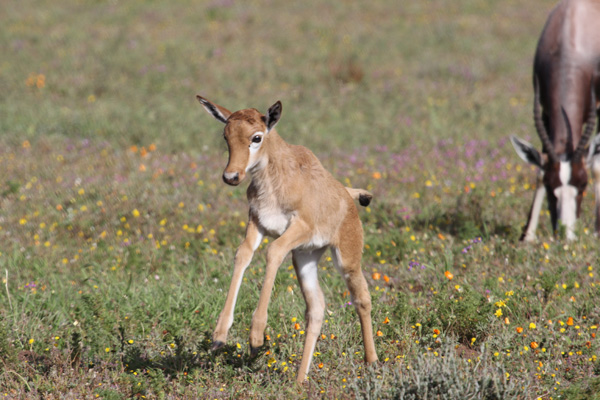
Good Fences
Many African antelopes are known for their dramatic jumping ability. The springbok, for instance, can jump 13 feet in the air.
Other species like kudu and impala have similar athletic abilities. A fence presents no obstacle for these animals.
Not so the bontebok. It can make little leaps, but it cannot clear even a basic livestock fence – the only fence available in the 1800s.
So when Dutch farmer Alexander van der Bijl built a fence to enclose the last 17 bontebok on his farm, the bontebok didn’t escape. Whereas almost any other African ungulate would have simply and quickly moved out of this simple enclosure, the bontebok couldn’t jump.
The ability to jump would have been a leap into extinction.
The bontebok received a stay of execution, but its future was far from secure. pasture land was not ideal habitat. And so the last herd of bontebok survived, but barely.
In 1931, only 17 bontebok remained. These animals were transferred to a national park established to save the species, appropriately named Bontebok National Park. Located near the Cape community of Bredasdorp.
The population grew slowly, but the habitat was still not quite right for the animals. In the 1960s, half of the park population died due to worm infestations, copper deficiency and other maladies.
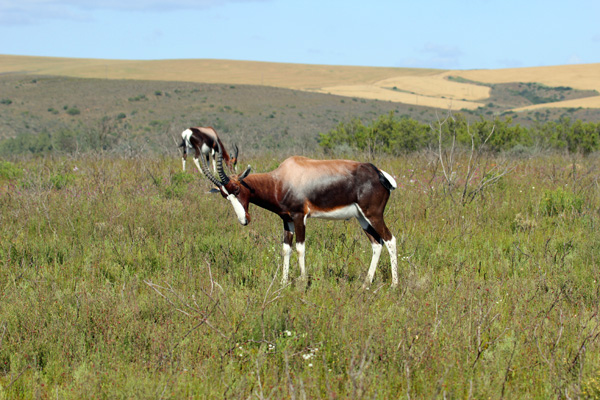
In 1961, Bontebok National Park moved. That’s right: the national park changed locations, to better match the needs of its namesake animal. Sixty-one bontebok were relocated to the new park near Swellendam, an area that still had the indigenous vegetation known as fynbos.
There, the population finally began to thrive, eventually reaching the carrying capacity for the small national park. Conservationists moved animals to other Cape national parks and private reserves, and the bontebok thrived.
By 1969, there were 800 bontebok in the world. Today, the population hovers between 2,500 and 3,000. That hardly makes it abundant, but its future is considered secure.
It’s one of the most dramatic turnarounds for a large mammal, ever.
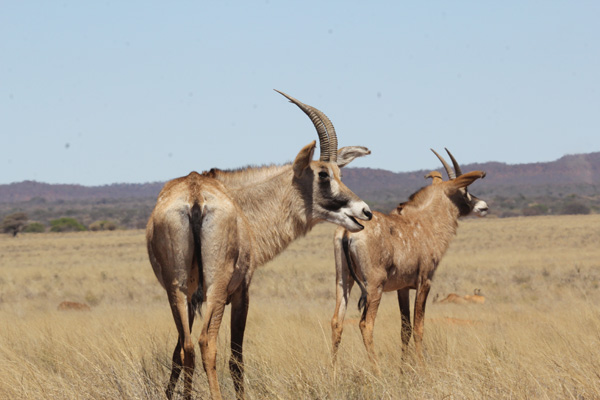
Home on the Ranch
Certainly, this success story would not have happened without national parks. But it would be remiss not to also recognize the role of another industry: game ranching.
If you read through the writings of African explorers and safari hunters from the early 20th century, you will notice that southern Africa is mentioned rarely if ever. The safaris we associate with Hemingway are safaris in East Africa.
South Africa was considered to be devoid of game outside of large reserves like Kruger.
But then ranchers saw a market for game meat and hides, and began shifting from cattle and sheep to springbok and blesbok. Many ranches then began adding other mammals, catering to big game hunters and wildlife-watching tourists.
In essence, this created a network of thousands of properties with the potential to provide habitat for endangered wildlife like bontebok. Today, many bontebok are found on these ranches. Ranching also helped bring back other Cape species like black wildebeest and Cape mountain zebra.
There is even a partnership between national parks and private ranches to use selective breeding to create a zebra that looks like the extinct quagga.
The springbok, South Africa’s national animal, now has a population of 2.5 million animals, largely due to this ranching.
That’s not to say game ranching is without obvious flaws. Many ranch owners introduce animals from outside their native range – surmising that safari-going tourists care little about what’s indigenous and just want variety.
In fact, I saw my first bontebok on a private reserve outside Etosha National Park in Namibia – more than 1,000 miles from the antelope’s home range.
Some hunting ranches are even breeding “designer” trophies – golden wildebeest and black impalas and “copper” springbok.
None of this has anything to do with conservation. It’s the opposite: it spreads non-native species and can lead to more common animals hybridizing with rare ones.
But conservation-minded game ranching has undeniably helped save species, including the bontebok.
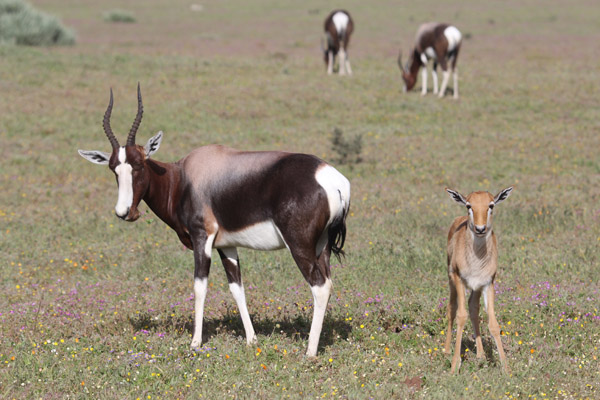
The bontebok will no longer range unimpeded across its range. It is, ultimately, easier to save a species than its migration routes. But we still have bontebok in native habitat. To see them among flower fynbos remains a stunning sight – and should be a sign of hope for other wildlife conservation issues.
Wildlife conservationists are facing an increasing number of those drastic situations, with the rhino poaching epidemic being Exhibit A.
It’s easy to decry wild ideas like the recent plan to move four percent of Africa’s rhinos all the way to Texas ranches as a sign of desperation. But certainly, it’s no more desperate than putting a fence around a pasture containing the last herd of bontebok – a fence that worked only because bontebok can’t jump.
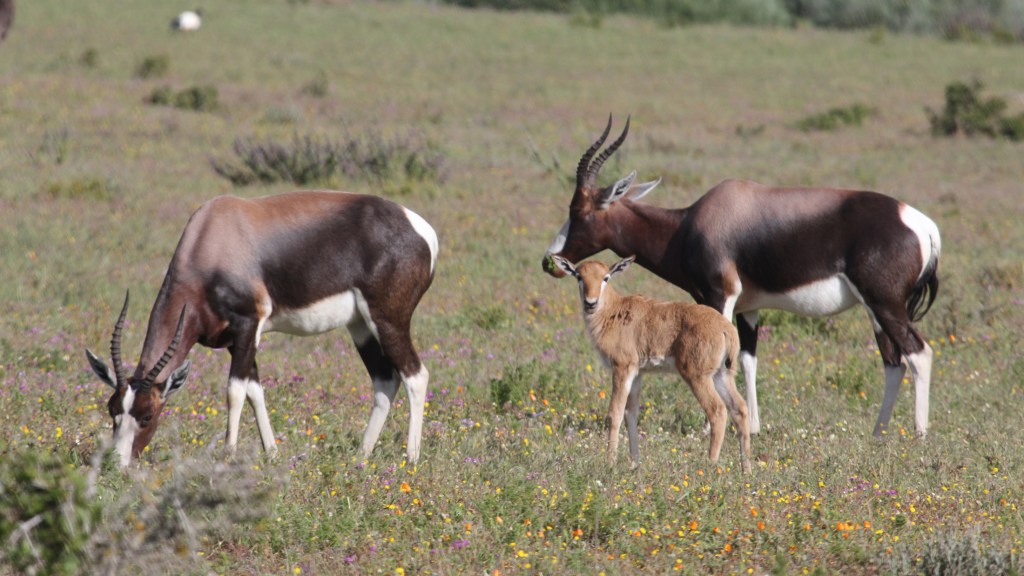



The facts in this article is utterly wrong. See the latest Scientific Technical Report by Deon Furstenburg May 2016. This report had been presented at the 9th International Wildlife Ranching Symposium in Windhoek in 2016 and several other workshops. A summary of has been published in the Game & Hunt, June 2016. It can also be read on the website of http://www.geowild.co.za in the tab: News Release. The present population number of the Bontebok exceed 9 000, most likely closer to 11 000. The miracle of survival was the translocation of some Bontebok to the Eastern Cape in 1944. The Bontebok became trapped in the Western Cape after it had evolved in a most favoured habitat to the south of the African Continent which today lies 120 m under the sea level.
Sustainable utilization is the only way to ensure any wildlife species survives. Why are there so many sheep and goats eating a hole into the vegetation habitat which supported animals like bontebok..? It’s because they have an economic value.
Why is territory cut up into smaller and smaller fenced parcels..? It’s to be able to manage those domestic animals better.
So-called eco-tourism can never sustain the need for greater wildlife areas. What will happen to bontebok numbers when they reach a certain point where they’ve saturated the few areas dedicated to “eco-tourism”..? They’re certainly not going to increase.
The only time their numbers will increase is when man creates a demand for their meat, hides and trophies to a greater extent than demand for mohair, wool, mutton and goat meat. The way to do that is through the recognition and promotion of hunting as an indispensable environmental and wildlife management tool.
We run bontebok on our game ranches, have done so for some 17 years and would love to have many more. But ridiculous government legislation applying to the hunting and relocation of the species means that current demand for them is “fashion” and will only be transient. Yet there’s no such legislation applicable to the movement and trading of goats, sheep and a host of foreign domestic animals which do enormous damage to our natural habitat.
Some otherwise intelligent people become truly crazy and illogical when it comes to wildlife management.
Heartwarming story, but what about the gene pool. Surely 17 animals were not enough for a sustainable gene pool. (This example reminds me of the white Qatar oryx.
So wonderful to see the ranches are taking in animals like these. I live on one, and the views on animals like Wildebeest are exceptional, especially in the Greater Kruger National Park. – “Make no doubt about it, eco-tourism is awesome…”
The first time in my life I saw a wild (meaning not in a zoo) antelope it was a bontebok. It was in the West Coast National Park, Western Cape, last year. Living in Switzerland and visiting ZA for a vacation, I did not know about bonteboks before I looked up in my mammal guide for identification. A very beautiful antelope indeed.
Great success story, and it was news to me. I know that bontebok are a subspecies of the more prolific blesbok but I had no idea they came so close to extinction, or that the fynbos is their natural habitat. I see blesbok every morning outside my window (what a pleasure) and used to think they were either blesbok or bontebok, but now I know better. Thanks for that.
Nice piece!
Seventeen
When I see the headings for pieces like this, I instinctually turn my face to the side just a touch, like I am about to get hit. -And a little voice inside me says, O please give me some good news.
Good News — yes
With each case comes learning. So, We are learning.
Thank you, Matt Miller.